Teresa!
Teresa, look for an email from Lavinia to discover how you wish to receive your ebook of Ravishing Ruby.
Thanks for visiting Risky Regencies.
Teresa!
Teresa, look for an email from Lavinia to discover how you wish to receive your ebook of Ravishing Ruby.
Thanks for visiting Risky Regencies.
 Last night we saw the final episode of Downton Abbey, the most popular drama in the history of PBS and a worldwide hit. Needless to say, Julian Fellowes, the creator and writer of Downton Abbey, tied up all the loose strings and brought us what we Romance authors and readers love–the happy ending.
Last night we saw the final episode of Downton Abbey, the most popular drama in the history of PBS and a worldwide hit. Needless to say, Julian Fellowes, the creator and writer of Downton Abbey, tied up all the loose strings and brought us what we Romance authors and readers love–the happy ending.
There won’t be any spoilers in this blog. Instead I want to talk about what this series can teach us about writing good historical romances.
Write great characters.
One of the things I love about Downton Abbey was the characters. The characters were vividly drawn and complicated. I know some would say the characters were stereotypes. Certainly they were recognizable in their roles, but each of them came with a few surprises and twists.
Include lots of conflict.
Downton Abbey thrived on conflict, both internal and external, mostly creating barriers to romance between the characters. Consider Lady Mary, whose class snobbery almost cost her each of her husbands. We tuned in to see if she’d choose love or her idea of what an aristocrat should be. Or think of the disasters that befell Edith every time she was close to having a happy ending to her romantic relationships.
 Make setting matter.
Make setting matter.
Downton Abbey was always lush in its settings and paid attention to small details in the setting. Think of all the scenes at meals and how the details of place settings and food and how it was served helped to make those scenes come alive. Think of how the costumes of Downton Abbey enthralled us. The costume designers tried to make the costumes as accurate as possible, down to the smallest detail.
Make the history matter.
From the very first episode, the real history of the times affected the story. The inciting incident was the sinking of the Titanic. Throughout, the history was woven in to the story.
Don’t show the dirty bits.
I don’t mean don’t show love scenes or naked ladies. I mean don’t show the stark reality of the time period. Downton Abbey certainly idealized aristocrats, making them seem more benevolent of their servants than most probably were. And the Crawleys were probably more flexible and forgiving than their real counterparts, but they were what we’d wish them to be. I don’t want to write about Regency sanitation or about the bugs and vermin that were prevalent in the time period. I’d rather create a world my readers and I would enjoy inhabiting.
Watch the pacing.
I’m sure those who watched the final two episodes were left with the impression that the story lines seemed rushed, as if Julian Fellowes was in a hurry to tie up all those loose strings. How often have you read books where the endings seemed rushed? It is a pitfall we need to avoid when we plot our books.
I am sad to see the series end. I find myself hoping the actors all find other good roles to play, as if they were their characters and I want them to go on living. I know it was little more than a costume drama/soap opera. But soap operas have fiercely loyal followers. I should be so lucky to have those numbers of loyal fans.
How about you? Did you watch Downton Abbey? What do you think made it such a popular series?
 Oh to be in England
Oh to be in England
Now that Spring is here
Oh to be in England drinking English beer
–English Drinking Song
By the time you read this, I will be in England (or on a plane getting ready to land at Heathrow). I’m tagging along with Kristine Hughes of Number One London blog. Kristine is going to be offering tours soon and this is her exploratory trip. We’ll be investigating all the wonderful places her tours might visit and meeting experts who might provide in depth information about what we see.
We’ll arrive Monday morning and at six o’clock in the evening, we are scheduled to take a special, small group tour of Buckingham Palace.
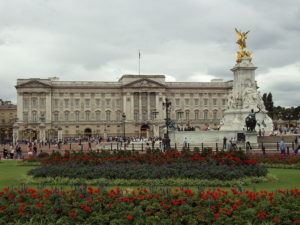
The next few days we’ll be walking the streets of Mayfair and meeting experts and visiting places of interest.
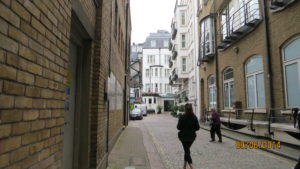
Then we’re off to Chatsworth House, for a whole day. We’ll be walking from our hotel, over that bridge.
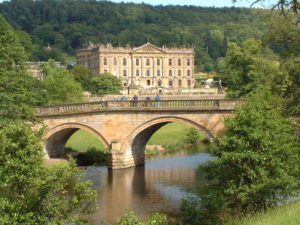
Then to Derby, where we might see this Pickford Museum
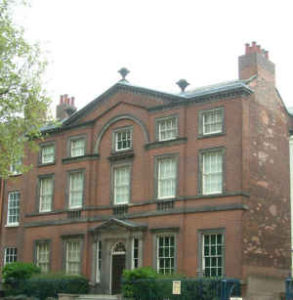
Then to Brighton to spend a day at the Regency Town House
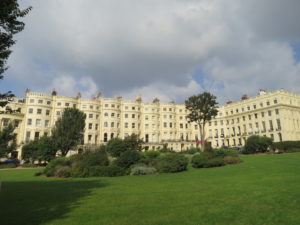
And on to the Pavilion
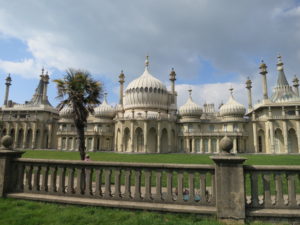
Finally back to London where we’ll visit my editors at 1 London Bridge, where the new Mills and Boon offices are now located and last, but not least, an evening tour of Apsley House, a fitting ending for two Wellington groupies like us.
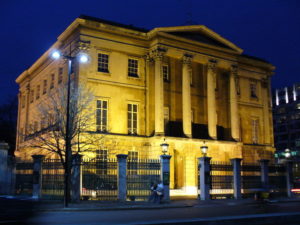
Keep track of us on Facebook. We’ll be posting photos of the whole trip.
My friend Kristine Hughes and I spent three days at Chatsworth on our May England trip and it was not enough time!
Chatsworth is the Derbyshire country house of the Duke of Devonshire, one of the first of the great country houses to be open to the public in order to raise enough money to save the place. The rescue of Chatsworth was the work of the late Duke and Duchess and what they achieved was a remarkable gift to their countrymen and the world.
Much of the success of Chatsworth must be given to the late Duchess of Devonshire, the former Deborah Mitford, youngest of the Mitford sisters, so captivating and/or scandalous that we are still talking of them today. Debo, as her sisters called her, had the imagination and drive to make Chatsworth the successful enterprise it is today, employing some 600 workers. In doing so she preserved a place of great beauty, both inside and out.
Here’s what we came upon that first day, after closing time, so there were no cars and very few people. It must have been close to what our Regency characters would have seen had they visited the house.
The beauty of the landscape was the work of Capability Brown, the famous landscape architect who popularized the naturalistic style in the mid-1700s. To enhance the beauty of the views from the front of Chatsworth House, Capability Brown required the 4th Duke of Devonshire to have the village of Edensor moved to a more picturesque location.
The next day we took the house tour and walked into the Painted Hall. The 4th Earl and 1st Duke of Devonshire was responsible for the Painted Hall. The artist was Louis Laguerre and the mural depicts the allegorical ascension of Julius Caesar. The upper walls show scenes from Caesar’s life. 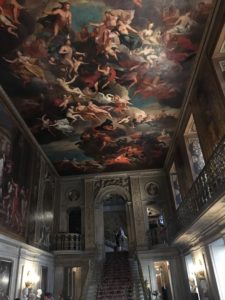
The 1st Duke had been one of the Immortal Seven who signed the invitation for William III of Orange to take the English throne, receiving the titles of Duke of Devonshire and Marquess of Hartington for his service. He rebuilt Chatsworth House and decorated it with symbolism celebrating King William’s monarchy. In the murals Julius Caesar sympbolizes William. Unfortunately William never saw the beautiful murals painted in his honor. He never visited Chatsworth.
In every hall and room there is something of interest to see. I took dozens of photos but didn’t cover a fraction of the beautiful art and furnishings of the house. In the music room there is a door ajar, revealing another door–and a violin.
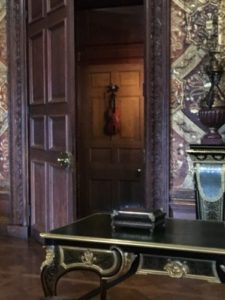
Look closely at the violin. Bet you can’t tell that it isn’t real. It is the painting of a violin, so realistic-looking that one must take it on faith because they don’t allow you to walk up to it and touch it.
Of course, there is homage to perhaps the most famous Duchess of Devonshire, Georgiana Cavendish. Georgiana, a celebrated beauty, married the Duke when she was a mere seventeen years old. She went on to be a successful political hostess, friend of the then Prince of Wales, campaigned for Charles James Fox. She was also a fashion icon. She was banished to the Continent for a while when she became pregnant by Charles Grey, but she filled her time there collecting minerals and gems. Her collection is on display in Chatsworth House.
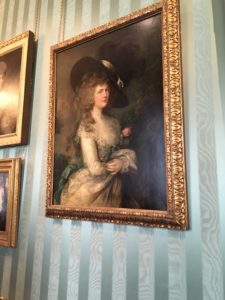
Not much was said on the tour of Georgiana’s friendship with Lady Elizabeth Foster, who became the Duke’s mistress and bore him two children raised a Chatsworth with Georgiana’s children and another of the Duke’s out-of-wedlock children. After Georgiana’s death in 1806, Lady Elizabeth Foster became the next Duchess of Devonshire.
The house tour ends at the sculpture gallery. Most of the works exhibited there were commissioned by Georgiana’s son, “Hart,” who became the 6th Duke of Devonshire and who was responsible for much of the art and improvements to the house and grounds.
After our tour of the house, we visited the farm, which was more like a petting zoo for children, but Chatsworth is a working farm with its very successful farm shop, a place we, unfortunately, did not see.
The next day we took the garden tour and returned to the house again to walk through at our own speed. Here’s a snippet of what we saw on the garden tour.
There was so much more to see and more to see again. I would go back in a minute and do this all over again!
If you have a chance to visit Chatsworth, give yourself more than one day. You’ll be happy you did!
(My thanks to Denise Costello who helped me figure out how to appropriately size the videos to fit the blog!)
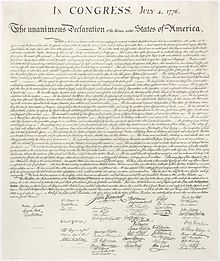 Today we in the USA celebrate Independence Day, the anniversary of the Declaration of Independence, the American colonies’ declaring themselves independent sovereign states separate from Great Britain.
Today we in the USA celebrate Independence Day, the anniversary of the Declaration of Independence, the American colonies’ declaring themselves independent sovereign states separate from Great Britain.
What were they thinking?
The members of the Continental Congress who signed the Declaration were fed up with being taxed by Great Britain without having any representation in Parliament. The colonies had their own legislatures; they didn’t need Parliament.
Ordinary citizens of the colonies were not so sure of this independence idea. They were used to British rule and did not know what life would be like if they weren’t subjects of the British crown. Upper classes feared they might lose their status in an independent America and no one knew if common citizens were capable of governing themselves.
 In Great Britain the aristocracy called the American’s misguided in their desire to break from the Crown. They signers were threatened with imprisonment, seizure of property and death. A pamphlet of the times also noted that although the Americans declared their belief that “all men are created equal,” they weren’t freeing their slaves.
In Great Britain the aristocracy called the American’s misguided in their desire to break from the Crown. They signers were threatened with imprisonment, seizure of property and death. A pamphlet of the times also noted that although the Americans declared their belief that “all men are created equal,” they weren’t freeing their slaves.
King George III declared the colonies to be in a state of rebellion and he sent in the British Army to set them straight.
 The Declaration of Independence captured the interest of French revolutionaries, who used it when drafting their own Declaration of the Rights of Man and Citizen. The document influenced the development of freedom and democracy in Europe and other parts of the world.
The Declaration of Independence captured the interest of French revolutionaries, who used it when drafting their own Declaration of the Rights of Man and Citizen. The document influenced the development of freedom and democracy in Europe and other parts of the world.
So as we eat our hot dogs, march in parades, and ooh and aah over fireworks, let’s remember the courage it took to leap into the unknown and start a new country founded on new ideals.
Happy July 4th!!
